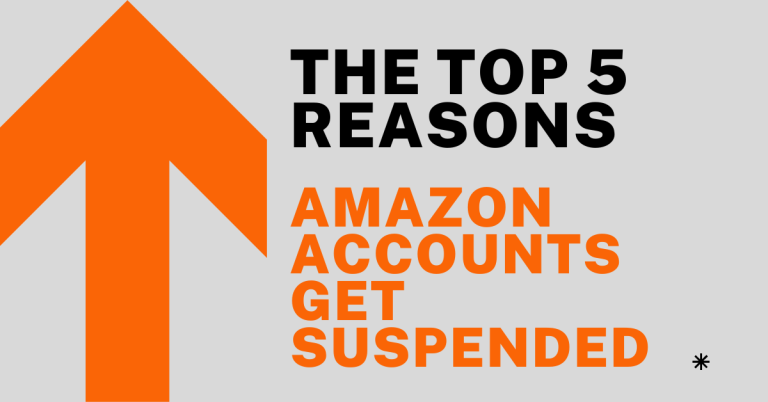Finding the Next Big Thing: How to Conduct Profitable Amazon Product Research
Success on Amazon doesn’t happen by chance. It starts with finding the right product—a product that not only sells but also keeps the competition at bay. This is why Amazon product research is a critical first step for any seller who wants to hit the jackpot. But how do you uncover that next big thing?
In this blog, we’ll guide you through the process of conducting profitable Amazon product research. We’ll dive into tools, strategies, and real-world tips that will help you make informed decisions and maximize your profits. Whether you’re a seasoned seller or just starting out, these insights will set you up for success.
1. Identify a Profitable Niche
Before you can start hunting for products, it’s essential to pick the right niche. A niche is a specialized segment of the market that appeals to a particular audience. The key is to find one that has demand but isn’t overly saturated with competition.
To identify a profitable niche, start by asking yourself these questions:
- What are people looking for that isn’t easily available?
- Can I offer something better, cheaper, or more innovative?
- Does the niche have growth potential?
- Using tools like Google Trends can help you spot rising trends, while Amazon’s Best Sellers list shows what’s hot across categories. By narrowing down your focus, you can then move on to finding specific products.
2. Leverage Amazon Research Tools
Conducting research without the right tools is like finding a needle in a haystack. Luckily, there are a variety of Amazon product research tools that make this process easier and more data-driven. Here are some of the top tools:
- Helium 10: One of the most comprehensive tools for Amazon sellers, Helium 10 helps you track product performance, competition, and keyword rankings. It also has a product research tool that identifies high-potential products based on search volume, demand, and competition.
- Jungle Scout: Known for its product research capabilities, Jungle Scout allows you to filter through Amazon’s database to find profitable products with low competition. The Opportunity Finder helps you discover new niches and profitable products based on your criteria.
- Alibaba: While primarily a sourcing platform, Alibaba can be invaluable for product research as well. You can see trending products and estimate how much it will cost to source items, helping you assess the profitability of potential products.
3. Evaluate Market Demand and Competition
Once you’ve found some product ideas, the next step is to evaluate market demand. A profitable product should have a balance between high demand and low to moderate competition. If too many sellers are fighting for the same piece of the pie, it will be harder to stand out.
How to evaluate demand and competition:
- Check the product’s sales rank (Best Sellers Rank, or BSR). The lower the BSR, the better the product is selling.
- Look at the number of reviews. If a product has hundreds of reviews, it likely has strong demand—but it also means stiff competition. Ideally, look for products with moderate reviews (50-200), as this indicates demand without overwhelming competition.
- Use tools like Jungle Scout or Helium 10 to see estimated monthly sales for the products you’re considering. This helps you determine if the market is big enough to support your entry.
4. Analyze Profit Margins
A product may be popular, but if it doesn’t offer enough profit margin, it won’t be worth selling. Profit margin is the amount of money you make after all expenses, including manufacturing, shipping, and Amazon fees.
Steps to analyze profitability:
- Use Amazon’s FBA calculator to estimate the fees and costs associated with selling on the platform.
- Factor in sourcing costs by checking platforms like Alibaba for potential suppliers.
- Consider shipping and logistics expenses, especially if you’re sourcing internationally.
- A good rule of thumb is to aim for a 30% or higher profit margin. That way, even after expenses, you’ll have room to reinvest in growing your business.
5. Focus on Solving Problems
The most profitable products are often the ones that solve real customer problems. If you can offer a product that meets a specific need or addresses a pain point, you’re much more likely to succeed.
How to identify problem-solving products:
- Review the Customer Questions & Answers section on Amazon product pages. See what buyers are asking about or what features they feel are missing.
- Read negative reviews. Often, these reveal frustrations that you can solve with a better product.
- Conduct online research through forums or social media groups where your target audience congregates. People are constantly discussing their issues, and you may discover a product idea by paying attention to what they say.
6. Avoid Overly Trendy Products
Trendy products can seem like a great opportunity, but they often have a short lifespan. If you’re looking to build a sustainable Amazon business, it’s better to focus on evergreen products—items that are in demand year-round.
Why avoid overly trendy products:
- Trends fade quickly, leaving you stuck with unsold inventory.
- Competitors flock to trendy products, increasing PPC costs and lowering margins.
- Trendy products often have volatile demand, making it harder to maintain stable sales.
- Instead, look for products with consistent demand. For example, kitchen gadgets, fitness equipment, or pet supplies tend to sell well regardless of the time of year or changing trends.
7. Test Before Committing
Once you’ve narrowed down your product ideas, it’s crucial to test the waters before making a full commitment. Start by ordering a small batch of products to gauge demand and customer interest.
Here’s how to test your product idea:
- Launch a small PPC campaign to drive traffic to your listing and track how well it converts.
- Offer the product in limited quantities to create a sense of urgency and see if it sells out quickly.
- Gather customer feedback through reviews or emails to understand what improvements might be needed before scaling up.
- Testing ensures that you’re not sinking too much capital into a product that may not perform as expected.
Conclusion:
Finding the next big thing on Amazon isn’t about luck—it’s about strategy, data, and careful planning. By conducting thorough Amazon product research, evaluating demand and competition, and testing your ideas, you can uncover profitable products that keep your business growing.







